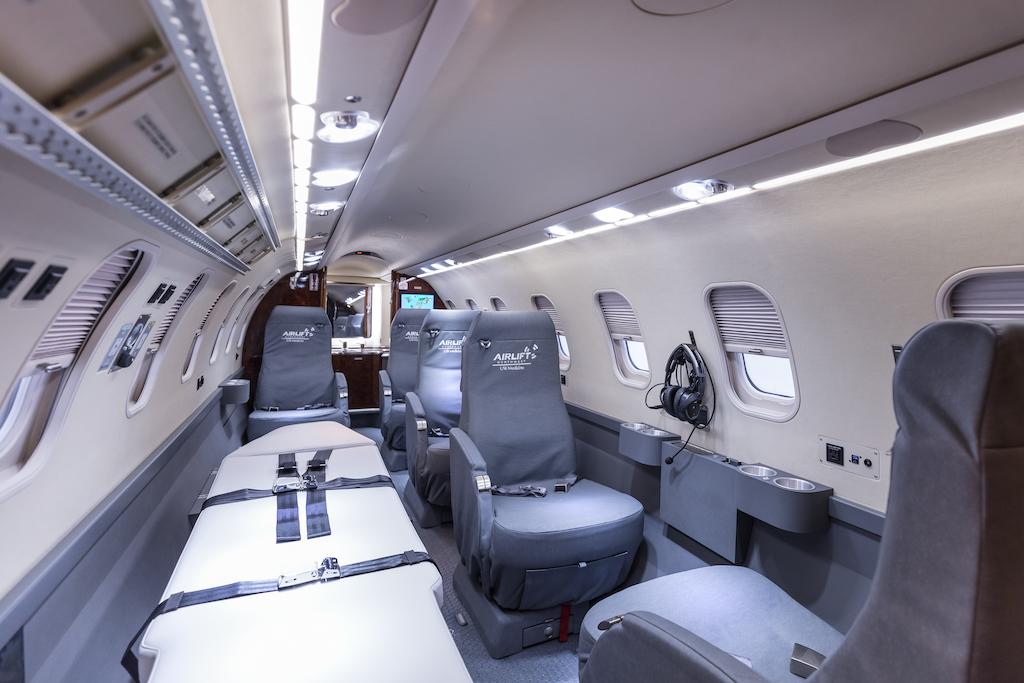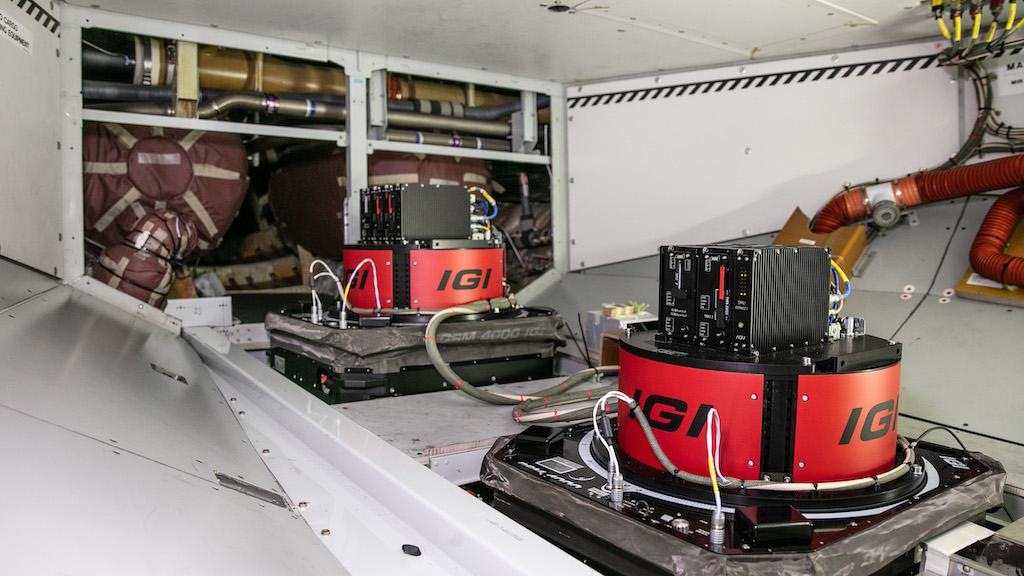MROs See Strong Special Mission Market, Part 1

Elliott Aviation modified a Learjet 45 with an aeromedical interior shown here.
Business aircraft OEMs and MRO companies are seeing increasing opportunities in the special mission modification market, thanks in large part to fleet obsolescence and higher performance requirements.
The global number of business aircraft dedicated to special missions as of October 2022 totals 2,490, according to Jetnet’s Global Data Base Of Business Aircraft. Jetnet statistics are based on three categories: military, medical transport and fire service, with the military the largest at 1,895—a figure that includes 91 airliners. For all three groups, turboprops predominate with a total of 1,500, with business jets at half that number for 759.
Jetnet’s numbers show that air medical services command the more extensive jet presence—mainly in the light to mid-size range. Of the 633 total air medical fleet, there were 13 Pilatus PC-24s and 76 Learjets, including the 31, 35, 36 and 40/45 series models. The air medical group also included 236 King Air turboprops, of which 107 were King Air 200s. “All other business aircraft types make up the additional 149 aircraft. However, King Airs, PC-12s and Learjets are the most commonly missionized models for air medevac,” notes Paul Cardarelli, Jetnet vice president for sales.
Discussions with a variety of OEM and MROs also indicate that newer, more capable platforms are making inroads in the special mission aircraft market.
Over the past five years, Greenville, South Carolina-based Stevens Aerospace & Defense has performed an increasing number of Intelligence, Surveillance and Reconnaissance (ISR) conversions, mainly on King Air 350 turboprops and Challenger 600 family jets. The facility’s capabilities include work on used aircraft, as well as those built new and delivered green to the MRO specialist.
“Time on target and payload are the benefits of the King Air 350, while speed to target is the jet advantage,” explains Jim Williams, Stevens Aerospace & Defense senior vice president. “Business aircraft equipped with high-tech surveillance equipment are being favored by NATO countries because of their endurance, altitude and speed, with Challengers and Gulfstreams emerging as the preferred platforms for ISR. In the U.S., the Department of Defense is definitely trending toward jets for ISR platforms.”
Obsolescence in both the equipment and age of the airframes is driving this market, Williams notes. “NATO countries are behind the power curve with their aging fleets and will be playing catch-up within the next five years. With the ever-changing technology, I think the market for more ISR aircraft will continue to increase.”
Airbus ACJ 319 Conversion

“I do expect an increased demand in the coming years for special mission conversions, mainly fueled by the current geopolitical situation,” states Wieland Timm, Lufthansa Technik head of sales for VIP and special mission aircraft services. “We already see a lot of discussions and interest from potential customers. This is where we expect new opportunities for us, also in maintenance and materials supply.”
Timm cites as an example, a surveillance modification of a used Airbus ACJ 319 for missions dedicated to the Open Skies arms-control treaty in 2019. “This aircraft was previously operated as a classic corporate jet,” he says.
Along with surveillance, Lufthansa Technik is seeing interest in aeromedical configurations. “We are in close contact with several air forces in Europe that are looking for general solutions for medevac missions. Disaster relief missions and medical evacuations from crisis regions have gained a lot of importance here and resulted in an increased number of requests for aeromedical aircraft installations,” says Timm.
In the second part of this article, we describe modifications by companies including Flying Colours Corp. and Embraer Defense & Security.




